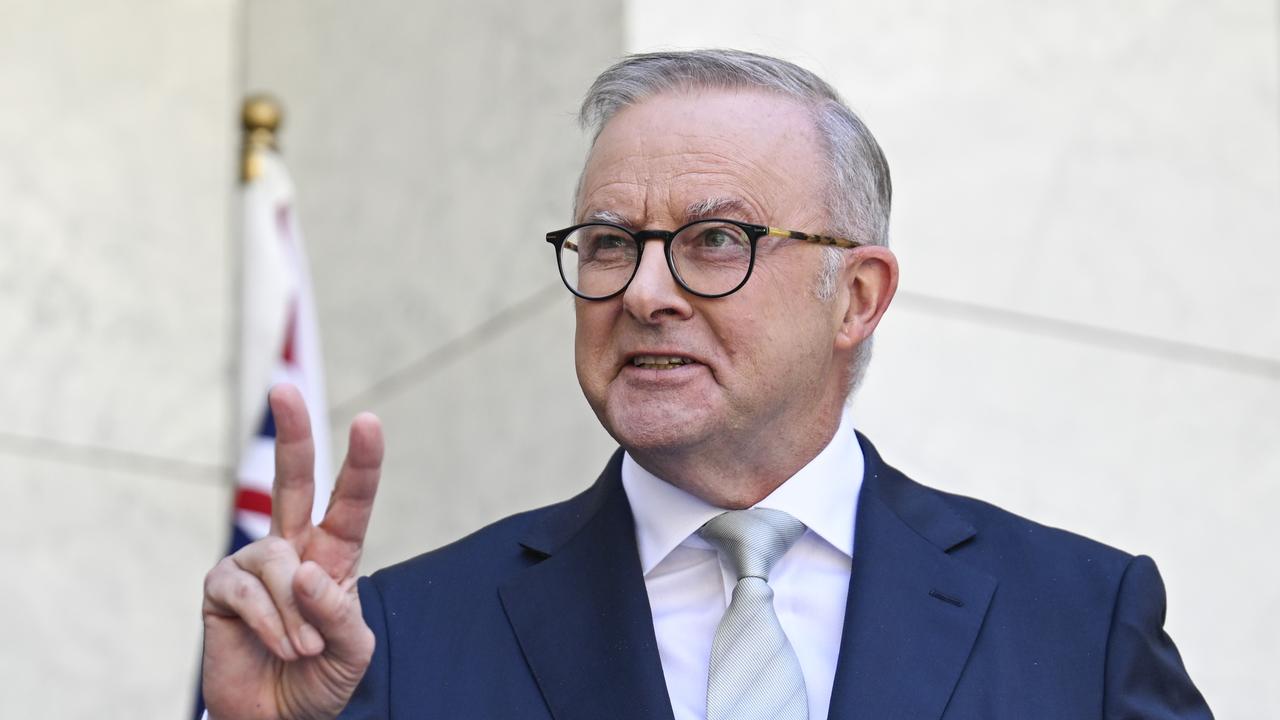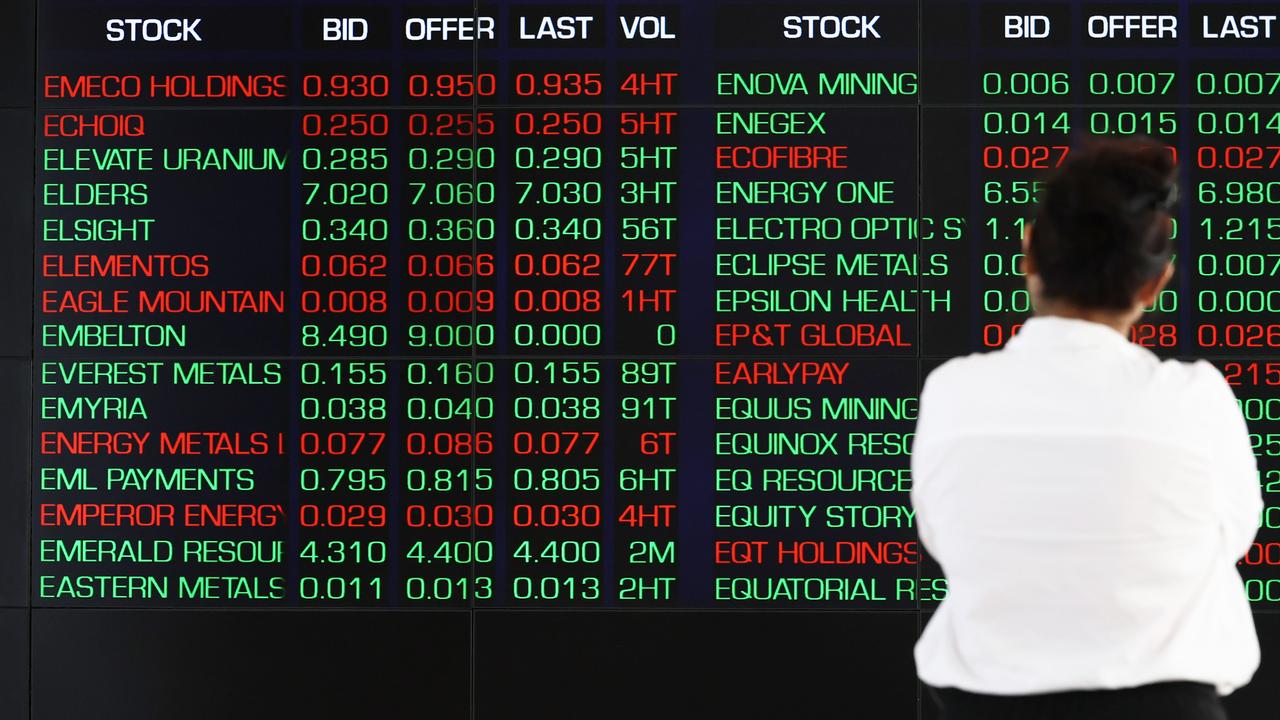iPhone 6, iPhone 6 Plus on sale in Australia September 19, priced from $869
OUR gadget guru has everything you need to know about Apple’s new products: local pricing, the specs that’ll improve your life and much more.
APPLE today launch two larger screen sized iPhones and a smart watch called the Apple Watch, and positioned itself as a pivotal player in mobile payments and health monitoring.
As expected, Apple launched two larger screen phones: the iPhone 6 with a 4.7-inch screen and an even larger phone, the almost tablet-sized iPhone 6 Plus with a very large 5.5-inch display.
They will be available in Australia on September 19, the same date as they launch in the US and will sell locally as follows: iPhone 6 — 16 gigabytes of storage, $869; 64GB, $999; 128GB, $1129; iPhone 6 Plus — 16GB, $999; 64GB, $1129; 128GB, $1249. The phones can be pre-ordered from Friday.
The launch already has sparked a price war among Australian telcos who are now offering credits worth up to $450 to entice customers to break contracts and jump ship to rival carriers.
Australian telco researcher Telsyte estimated that about 1.5 million iPhone 6 units will sell by year’s end, equating to about 100,000 per week for the rest of the year, supply permitting.
Managing director Foad Fadaghi said availability of the 64GB storage models might be an issue, given the removal of the 32GB storage option.
He said Telsyte research showed that one in five of those intending to buy an Android smartphone in the second half of this year might be won over by an Apple iPhone 6 with a larger screen.
“As a result of the iPhone 6 launch we might see a retaliatory price drop from competitors, or more aggressive bundling of smart watches and handsets,” Mr Fadaghi said.
While it was showcased today, the new Apple Watch will not be available until early next year. Australian pricing is unknown to date, but in the US the watch will sell from $US349 upwards.
There are three variations to the watch: the standard Apple Watch, the Apple Watch Sport with a 60pc stronger case and the premium Apple Watch Edition with an 18 carat-gold construction.
MOBILE: iPhone 6 sparks telco bidding war
Mobile payments too loomed big on Apple’s agenda today with chief executive Tim Cook announcing that iPhone 6 and iPhone 6 Plus users will be able to make payments in shops directly from their phone to a scanner.
But at this stage Apple Pay is only being made available in the US. Apple says it is looking at other markets, but no timetable has been released.
After years of ignoring the Near Field Communication (NFC) protocol used by competitors such as BlackBerry, Samsung and Sony, Apple has finally embraced it. It means the Californian company will enter the mobile payments business with a vengeance.
The launch at the De Anza College’s Flint Centre for the Performing Arts at Cupertino began at 3am AEST and went for two hours. Outside the theatre loomed a $3 million monolithic white building that Apple built ahead of the launch. It housed demonstration units of the devices on display.
Media and others in the audience at the launch were treated to an impromptu concert by legendary band U2, which performed a song from its new album Songs of Innocence as an advertisement of Apple’s Festival of Music currently being held in London.
Mr Cook said Apple customers with iTunes accounts — currently 500 million in 119 countries — can download the album for free in the next 24 hours.
Apple senior vice president of marketing Phil Schiller detailed the specs of the two new iPhones. He called the phones’ displays ‘Retina HD’.
Despite their larger sizes, the two handsets maintain, if not better, the screen resolution of last year’s premium model, the iPhone 5S. The iPhone 6 with a 4.7-inch screen has a resolution of 326 pixels per inch (the same as iPhone 5S), with 1334x750 pixels on the screen. The bigger iPhone 6 Plus has 401 ppi with 1920x1080 pixels.
The phones come in silver, gold, and “space grey” colour variants, they have a stainless steel back and apps take advantage of the larger displays. For example, the iPhone home screen now is available in landscape — which wasn’t the case before. The Message app presents as a two column display in landscape mode.
New gestures are available for the larger screen sizes — a side swipe to move between different web pages in, say, Safari, and a double home button press that shifts the top of the display to the bottom half, allowing for single hand use despite the larger phone size.
Under the hood, the two new iPhones feature Apple’s new A8 processor with 2 billion transistors — double that of last year’s phone, with Apple claiming a 25 per cent boost in CPU performance and 50 pc in graphics capabilities.
Mr Schiller said that despite the larger screens, the new iPhones delivered equal if not improved battery performance: 11 hours of HD video playback on the iPhone 6 and 14 hours on the iPhone 6 Plus.
Apple blasts ‘archaic’ credit card system
A co-processor used mainly for activity monitoring introduced with the iPhone 5S, last year had been upgraded and now included a barometric sensor.
The M8 co-processor was therefore capable of recording not only steps and distance travelled walking, running or cycling, but also elevation changes such as walking up flights of stairs by measuring air pressure changes, Mr Schiller said.
He said Nike already was developing a revised app that would track elevation.
He said the 4G LTE speed of the iPhones had been increased to 150 megabits per second, and Wi-Fi was three times faster, using the newer 802.11 ac wireless protocol.
He said Apple was working with US carriers to offer a new feature — Voice over LTE or VoLTE. It meant a person could make calls using their Wi-Fi — a feature that would be especially useful in poor cellular reception areas. Should they leave home and their Wi-Fi, the call would be transferred seamlessly to their cellular network.
The camera on the two iPhones also had been upgraded to 8 megapixels.
Focusing was almost twice as fast as on last year’s IPhone 5S. The iPhone 6 offered image stabilisation while the iPhone 6 Plus offered an enhanced optical image stabilisation.
As well as moving from front to back for focusing, the lens on the iPhone 6 Plus also could move up and down, and from side to side to automatically adjust and stabilise an image, Mr Schiller said.
Apple also announced new features for its 1080p video recording, but unlike Android phone vendors such as Samsung and Oppo, hasn’t upgraded its camera to shoot ultra high resolution or 4K video.
However normal video could be shot at 60 frames per second, and slow motion shooting had been extended to as much as 240 fps.
Mr Schiller showed video of a cyclist being filmed by another cyclist travelling along with them, showing a smooth ride. It was not unlike a demonstration by Nokia when it introduced its image stabilisation on its Lumia smartphone cameras. The camera also was capable of time lapse photography.
When shooting video, the camera could quickly refocus from a near object to people further away as the camera switched positions. And the front-facing camera included a burst mode for burst selfies.
Apple also announced the availability of its new iOS 8 operating system via a fee update from September 17.
It activates new features in Apple’s health application such as measuring altitude, increases available notifications and enables developers to make use of Apple’s in-built Touch ID as a security feature.
* Chris Griffith travelled to the Apple event in Cupertino courtesy of Apple.


